When you think about growing food in the city, it's cool to find ways that help the planet too.
Two really neat ideas are called vertical farming and aquaponics.
Vertical farming is when you stack plants on top of each other to save space.
Aquaponics is a way to grow plants and fish together. The fish waste helps the plants grow, and the plants clean the water for the fish.
These methods are awesome because they don't use a lot of land and they help keep the air clean.
Each way of farming has its own special benefits, and they both work well in cities where there isn't a lot of room to grow things.
Key Takeaways
- Set up vertical gardens with special sprayers and lights to make the best use of small spaces and save power.
- Use aquaponics to turn fish waste into food for plants, which also keeps the water clean.
- Create gardens on rooftops that collect rainwater and use it to water plants little by little.
- Design gardens that take care of themselves by copying how things work in nature.
- Get the neighborhood involved in gardening, use leftover food and plants to make the soil better, and throw less stuff away.
Vertical Farming Innovations
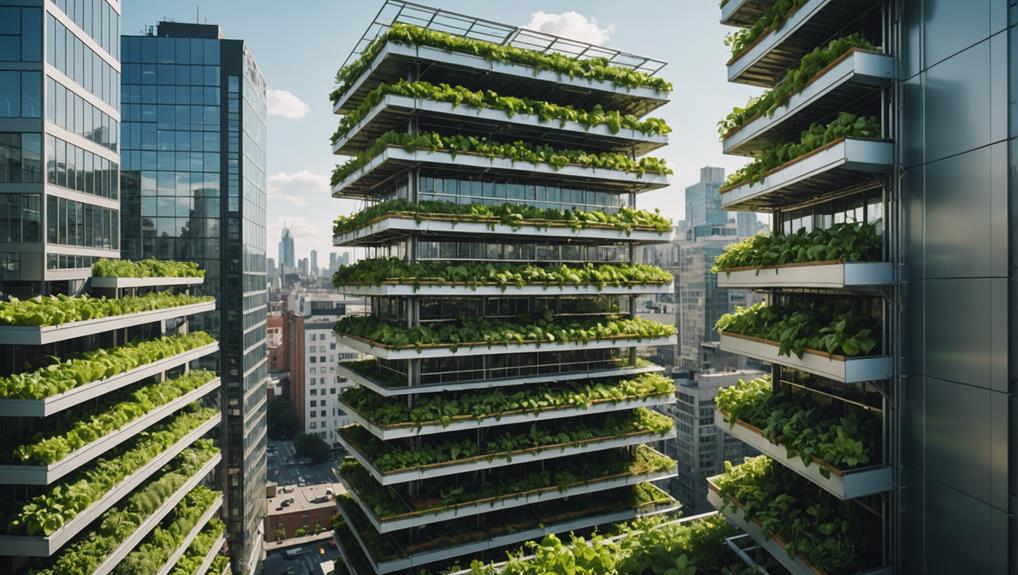
Vertical farming is a cool way to grow lots of plants without using much space. It stacks plants up high in layers. This method doesn't use soil; instead, it uses water to deliver nutrients right to the plants' roots. This water-saving trick cuts down water use a lot when compared to regular farming.
In another method called aeropics, plant roots hang in the air and get a mist that has both water and nutrients. This way uses even less water, so it's great for places that don't have much water.
In vertical farms, we also use special LED lights that help plants grow just right while using less electricity than normal lights. This setup helps us grow fresh veggies all year round, no matter the weather, and right in the middle of cities!
Aquaponics Systems Integration
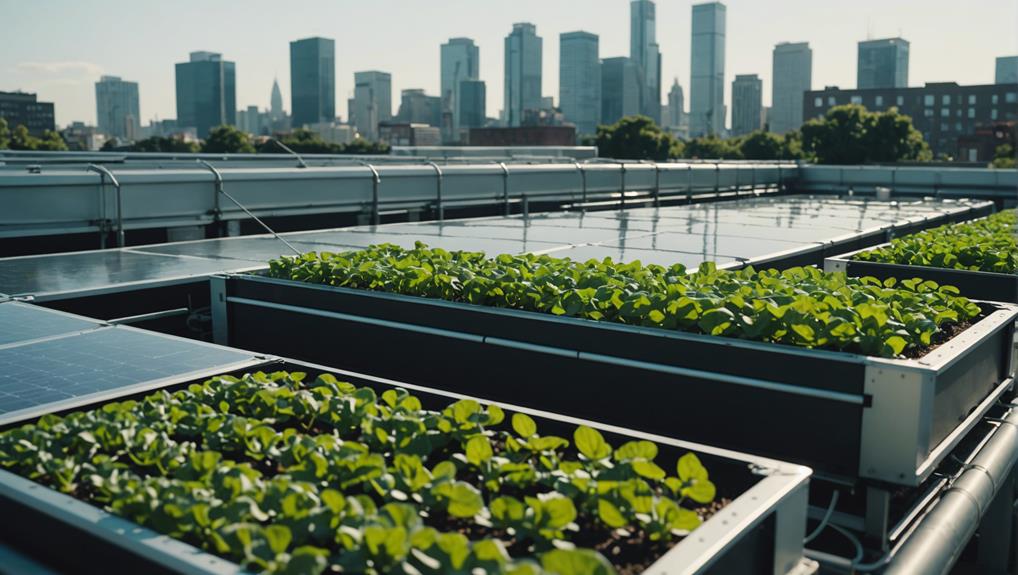
Aquaponics is a cool way to grow a lot of plants and raise fish at the same time. It's like a teamwork system where the fish help the plants and the plants help the fish. Here's how it works: the fish make waste that acts like a natural food for the plants. Then, the plants clean the water, which goes back to help the fish live happily.
This cool cycle means there's very little waste and everything gets used up well. What's awesome is that aquaponics can grow a lot more plants in a small space than regular farming and it saves a ton of water too. This is super helpful, especially in cities where there isn't much space to grow food.
Rooftop Garden Techniques

When setting up a rooftop garden, it's super important to pick the right plants. Choose plants that naturally grow well in your area because they don't need much extra care.
Remember to save water too. You can catch rainwater to use later, or pick plants that don't need much water.
Also, think about using a drip irrigation system. This helps get water right to the plants' roots, so you don't waste any water and your garden stays healthy without using too much water.
Choosing Suitable Plants
When you're setting up a garden on your rooftop, pick plants that can handle tough weather and not much dirt. Rooftops in cities are tricky spots for gardens because they get really windy and don't have deep soil. Choose plants that don't need much water. These tough plants help save water and are great for growing food in the city.
Try vertical gardening to make the most of your small space. You can use things like trellises to grow plants upward instead of spreading out. This way, you can fit more plants up there! It's also a good idea to use lightweight soil mixes. These mixes help plants drain water better and don't make the roof too heavy.
Grow herbs, veggies, and fruits that don't need deep soil. This helps you make the best use of your limited space and gives you fresh food to eat without leaving the city.
Water Conservation Strategies
Using smart ways to save water in your rooftop garden helps the environment. You can collect rainwater and use a drip system to water your plants. This way, you don't use as much water from the city, and it's better for places where saving water is super important.
Rooftop gardens are special because they help with things like rainwater running off too fast in cities and keeping buildings cooler. When you use rain barrels made from recycled materials, it makes your water-saving system even better and more eco-friendly.
It's also smart to use technology that helps you water your plants just the right amount. Things like sensors can tell you when your plants need water so you don't waste any. This helps your garden grow well and keeps it healthy without using too much water.
All these steps help make city gardens better for the planet and more sustainable, which means they can keep helping the environment for a long time.
Installing Efficient Irrigation Systems
Putting in good watering systems on your rooftop garden can cut how much water you use in half. Drip irrigation is super helpful because it sends water straight to where plants need it most — their roots. This way, less water is wasted by evaporating or running off.
You can also collect rainwater to use for your plants. This lets you use less water from the city and helps the planet too. Plus, it can save you some money.
Another cool tool is a smart irrigation controller. This gadget changes when and how much to water your plants based on the weather and how moist the soil is. It helps keep your plants healthy without wasting water.
Permaculture Design Principles
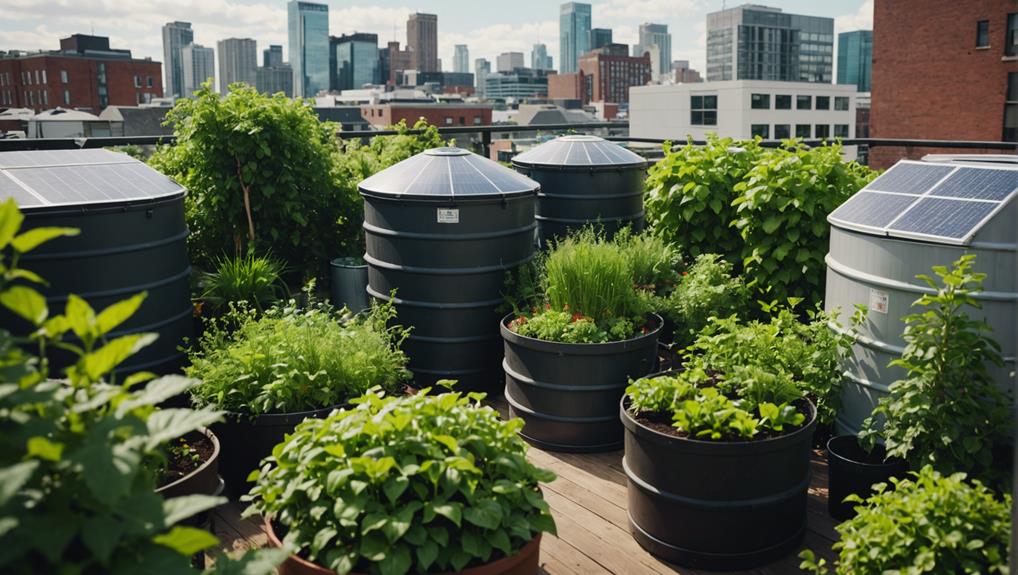
Permaculture design principles help make city farming better by copying how things work in nature. By using these ideas, you're not just growing plants, you're setting up a small nature-like area that helps city farming be good for the environment. These smart farming spots turn empty city spaces into green, productive places.
The main goal of permaculture is to have lots of different plants and animals, use resources wisely, and keep the environment healthy. It's important to watch and learn from nature so you can do the same in the city. This means less waste and more use of what's already there. For example, if you plant certain plants together, they help each other grow and you won't need harmful chemicals.
Permaculture also involves planning where to put plants in a garden to make sure they get enough sun, water, and nutrients. This helps plants grow better and produce more food. By using permaculture, city farmers can create gardens that don't need much help from outside and keep getting better over time.
As you learn more about permaculture, you'll see it's not just about farming; it's about living in a way that's good for the Earth.
Community Gardening Strategies
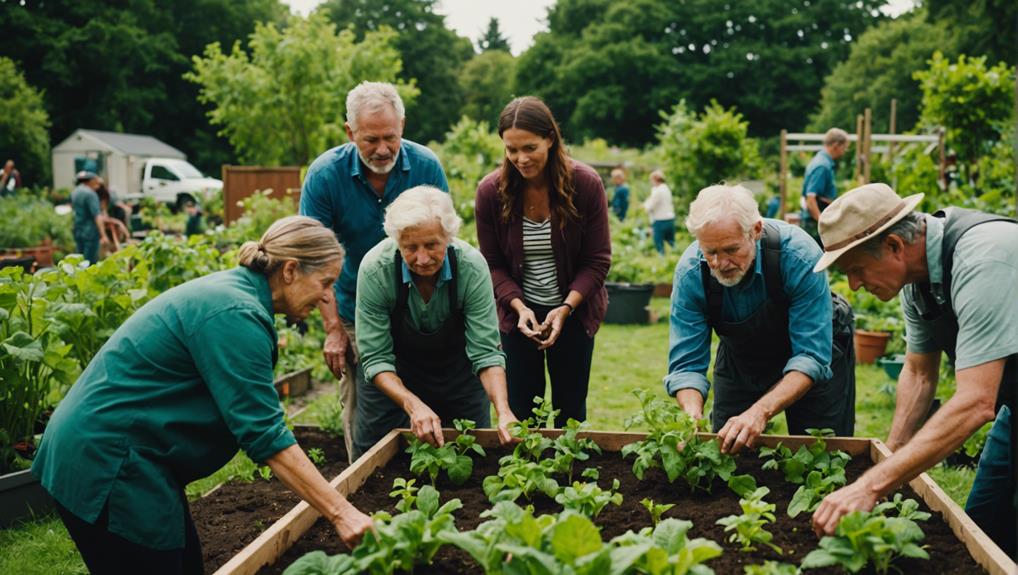
When you start a community garden, it's cool to use every inch of space wisely. You can grow plants up walls or fences with vertical gardening. This is really helpful in cities where there isn't much room.
Another neat trick is to plant different plants together that help each other grow better, which is called companion planting.
It's also awesome to get people from the neighborhood to help out. They can learn about gardening and feel more connected to each other. Plus, using things like rainwater or compost makes sure we're not wasting resources. This helps our garden keep going strong without hurting the environment.
Maximizing Small Space Yields
In cities, using cool gardening tricks like growing plants up walls and in small, marked squares can help you grow a lot of food, even in tiny spaces.
Vertical gardens use things like trellises or wall containers to let plants climb up, saving space on the ground. This way, you can grow a bunch of plants in a small area.
Square foot gardening is another cool trick. You divide your garden into small squares, each one foot by one foot, and plant different things in each square. This helps use every bit of space efficiently and makes taking care of the garden easier, like watering and pulling weeds.
Engaging Local Volunteers
Community gardens are cool because they help city folks grow their own food, which is super fresh and right at their doorstep. When local people volunteer at these gardens, they do more than just help with the plants. They become part of a team that cares a lot about keeping our planet healthy and making sure everyone has enough to eat.
These gardens are also great places to learn. People of all ages can get their hands dirty and learn about growing food in the city. It's a fun way to find out how important it's to take care of our environment.
Volunteering at a community garden brings people together, too. Everyone works side by side, shares tips, and supports each other. This makes everyone feel more connected and happy to be part of their community. And when people feel good about where they live, they want to keep making it better.
Sustainable Resource Management
Community gardens are super helpful for making cities more sustainable, especially because they use spaces that aren't being used for much else to grow food locally. This means we don't have to transport food from far away, which is good for the planet. Plus, growing food close to home makes sure more people have fresh veggies and fruits to eat.
In these gardens, people use smart farming tricks like recycling plant waste back into the soil and changing what they plant in different spots over time. This keeps the soil healthy and ready to grow lots of plants. These methods aren't just good for the garden; they also teach other city farmers new ways to farm better.
When you join in on community gardening, you're doing more than just growing food. You become part of a team that shares tips and helps each other. This makes our local food system stronger and teaches everyone how to take better care of our planet.
Composting Solutions
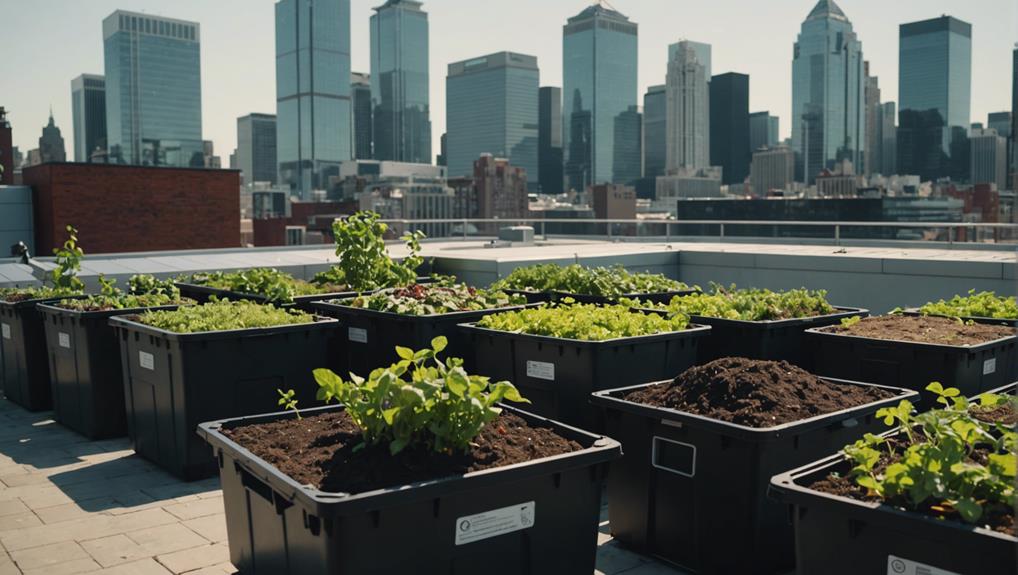
Composting is a cool way to help the planet by keeping food scraps out of places like landfills. When food waste goes to landfills, it breaks down without air and makes methane, a gas that's not good for our Earth. But in composting, the breakdown happens with plenty of air, which doesn't make methane. This helps in cutting down harmful gases that warm the planet.
Composting is also great for the dirt. When you add compost to soil, it gets rich in stuff plants love to grow strong and healthy. It helps the soil hold more water and lets tiny helpful bugs in the soil thrive. This makes it awesome for growing plants in cities where the soil mightn't be so good. Plus, when we use compost, we don't need to use as much fake plant food, which can be bad for our environment.
When whole communities get into composting, it's even better. Everyone learns how important it's to use stuff wisely and not waste. These programs teach people how to take care of our planet, and they help make our cities greener and more full of life.
Water Conservation Methods
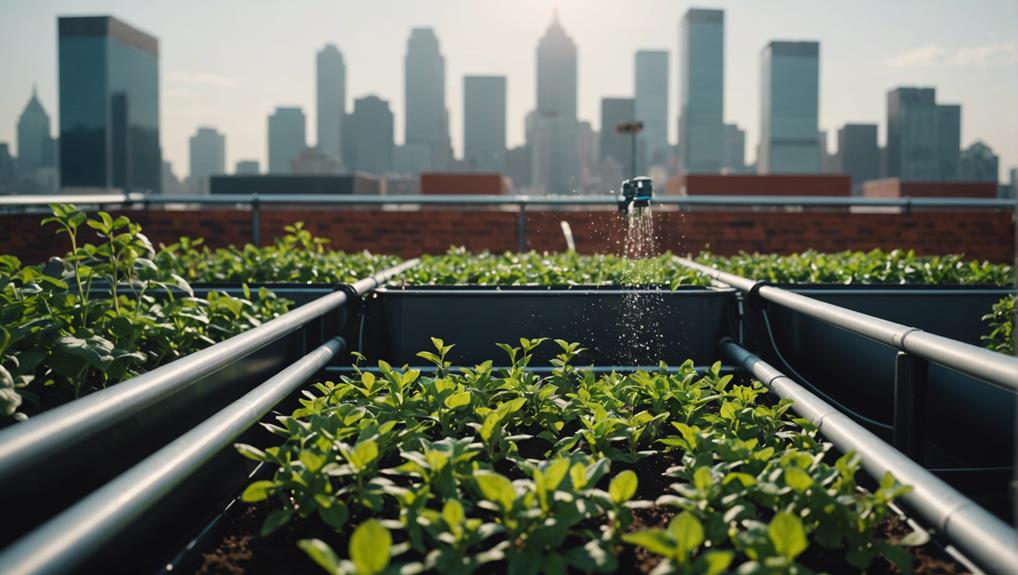
Water saving is super important, especially in city farming. One cool way to save water is by collecting rainwater. This method can cut down the amount of water you need for watering plants by a lot—up to 70%! It's like making the most of the rain by storing it and using it later for your plants instead of always using water from the city.
Another smart way to use water wisely is with a drip irrigation system. This setup sends water straight to where the plants need it most—their roots. This means less water gets wasted, and you could use up to 50% less water. It's a great way to make sure water isn't just evaporating into the air or running off where it's not needed.
Lastly, using greywater, which is the leftover water from home use like washing dishes, is another awesome way to help out. Instead of letting this water go to waste, you can reuse it to water your plants. This helps save more clean water and keeps the used water from overloading the city's sewer system.

